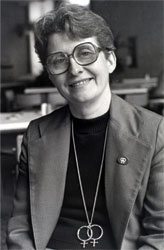Reader At Large
by Barbara Grier
writing as “Gene Damon”
Photograph courtesy JEB[1]Barbara Grier image ©2017 by JEB (Joan E. Biren.) Used by permission.
Printed in the August 1966 issue of Tangents
pp. 22–25
Reader At Large column #11
Laurence Tollmark is home from the sea, home to visit rich Aunt Sarah and he comes with A Fire In His Hand and death in his heart in this novel by Michael Grieg (Doubleday, 1963; Tower, 1965). But Aunt Sarah has other plans for her young, fascinating nephew and Laurence soon finds himself in the role of a kept boy (no sex). He turns to Elaine for kicks and picks up Sanford, a Negro male homosexual, as a companion. To really fill the winging bill of fare, he ends up marrying Jamie, said throughout the book to be a lesbian, though one would not guess it from her behavior, certainly. Sanford is a delightful character and a charlatan philosopher. His presence makes this otherwise so-so book a must.
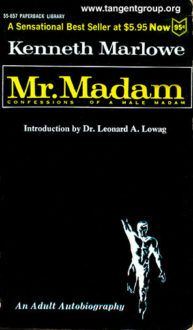 Mr. Madam and The Male Homosexual by Kenneth Marlowe (both published by Sherbourne Press in Los Angeles, 1964 and 1965, with Paperback Library reprinting the former in 1965) can hardly qualify as literature, but both are lots of fun to read. These beddy-bye adventures of rampant day-dreaming need a liberal dose of salt every line or two just to tone them down, but the gossip and the general humor have a certain appeal; just as really bitchy people do if one does not have to have too much of them.
Mr. Madam and The Male Homosexual by Kenneth Marlowe (both published by Sherbourne Press in Los Angeles, 1964 and 1965, with Paperback Library reprinting the former in 1965) can hardly qualify as literature, but both are lots of fun to read. These beddy-bye adventures of rampant day-dreaming need a liberal dose of salt every line or two just to tone them down, but the gossip and the general humor have a certain appeal; just as really bitchy people do if one does not have to have too much of them.
Old friend Edmund Schiddel, whose early generally overlooked paperback originals always seem to be pertinent, included several homosexuals in Break-Up (Avon, 1954; Macfadden, 1964 and 1966). Publisher’s man Kevin Benbow has a stable of homosexual writers to cosset and control in this novel primarily dealing with a miserably unhappy heterosexual marriage. Schiddel’s hard-cover career began with his 1959 novel The Devil in Bucks County, published by Simon and Schuster and reprinted by Pocket Books in 1960. He also wrote Scandal’s Child (Simon and Schuster, 1962, 1963; Pocket Books, 1964) and The Good And Bad Weather (Simon and Schuster, 1965; Bantam, 1966), the latter to be reviewed in this column later. Before the hardbacks (all of which are somewhat pertinent) he published an undetermined number of fine quality paperbacks, most of them better written than his later books.
The finest of Schiddel’s paperbacks are The Girl with the Golden Yo-Yo (Berkeley, 1955; Hillman Macfadden, 1961) and The Other Side of the Night (Avon, 1954; Berkeley, 1959; Macfadden, 1965). Both deal extensively with homosexuality and show a great deal more understanding and intelligence than the majority of the hardbacks on the subject.
All The Beautiful People in Richard Dowling’s novel (Dial, 1964; Pocket Books, 1966) are less lovely than the title might indicate. The life of New York’s garment center models and the men they attract makes for witty, entertaining reading but it also leaves a sour taste. Many minor male homosexual characters and a few lesbians dot the cast. One chapter deals with an impromptu lesbian exhibition which is hilariously funny, albeit not likely to qualify as a good public relations image.
The Lockwood Concern by John O’Hara (Random, 1965) is a typical and predictable O’Hara Pennsylvania family saga, but far better done than his last several novels. As is now to be expected he has included a liberal sprinkling of male homosexual characters.
 Some are treated sympathetically, others are simply humorous asides—but Mr. O’Hara is never exceptionally vituperative and he is one of the last remaining authors who understands the necessity of good plotting.
Some are treated sympathetically, others are simply humorous asides—but Mr. O’Hara is never exceptionally vituperative and he is one of the last remaining authors who understands the necessity of good plotting.
The Dark Tribunal by Kay Heriot (London, Hutchinson, 1962) is a very special book, unfortunately possibly limited in appeal to the serious reader. Dorothy Stevens, a successful American designer, visits family friends in Germany in 1959. There she meets and falls in love with a middle-aged art historian, Robert von Haldenberg. As a child, Dorothy had entertained youthful love for handsome magnificent Mathias Koerner —a German martyr in World War II. To her shock, Dorothy finds that years before Robert and Mathias had been deeply intimate friends—so intimate that everyone assumes they were lovers. Robert had been married to a brittle, cynical woman, Sybille, who found the relationship between the men unbearable and sued for divorce. Robert, supposedly in an effort to prevent homosexual scandal, is believed to have denounced Sybille’s father vindictively on a political charge to distract attention from his affair with Mathias. The novel is divided into four sections, each examining the events of the past from a different viewpoint and each including some of the current affair (platonic) of Dorothy and Robert. Through the book the reader is invited into the intelligent world inhabited by Mathias and Robert before the war. The strong ties of romantic love between these two men are presented with remarkable emotional intuition. It would be unfair to even allude to the crackling denouement—but the book will be caviar to those who will take the time to read it and enjoy it. Amazingly, the book has never been published in the United States though the author is an American.
The February, 1966 Reader column mentioned Carlo Coccioli’s magnificent book The Eye and the Heart, which was published first in London by Hinemann, 1960. This book has now been published in the United States by Shorecrest, with a new title, Fabrizio’s Book. Don’t miss it.
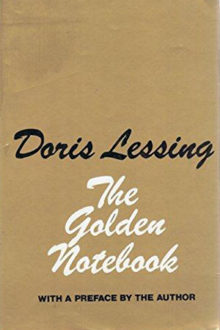 English author Doris Lessing is beginning to stir tremendous interest among the critics. Her first really “popular” title, The Golden Notebook (London, Michael Joseph; New York, Simon and Schuster, 1962; reprinted in a quality paperback by McGraw-Hill, 1963) is primarily about a series of heterosexual affairs from a woman’s viewpoint. However, one short section deals with a male homosexual couple, Ivor and Ronnie, their love affair, and their involvement with the narrator-heroine.
English author Doris Lessing is beginning to stir tremendous interest among the critics. Her first really “popular” title, The Golden Notebook (London, Michael Joseph; New York, Simon and Schuster, 1962; reprinted in a quality paperback by McGraw-Hill, 1963) is primarily about a series of heterosexual affairs from a woman’s viewpoint. However, one short section deals with a male homosexual couple, Ivor and Ronnie, their love affair, and their involvement with the narrator-heroine.
One of the many, many parodies on the James Bond novels, Waldorf, by James Goldman (Random House, 1965) includes a very substantial homosexual episode which is the novel’s key. To say more about it would spoil the reader’s fun.
The Microcosm by Maureen Duffy (Simon and Schuster, 1966; also London, Hutchinson, 1966) is unlikely to achieve its deserved popularity with the homosexual reading audience, for the very reasons which make it the most important study of lesbianism yet to appear in the form of a novel. Miss Duffy has wholly abandoned the subjective and personal approach which has been used exclusively in the past in favor of a narrative rich with echoes and imitations of Proust, Joyce, Fielding and Charlotte Charke (the latter an 18th Century actress and transvestite). Her narrator-heroine is Matt, an intellectual butch. To demonstrate Matt’s opinion of her own orientation, and also to induce the reader to treat Matt as an individual rather than as a woman, Miss Duffy has her referred to as “he” throughout the novel. This creates a distraction clearly not intended by the author. To show the variety of lesbian behavior, or perhaps to prove that there is no set pattern, there is an enormous supplementary cast on all levels of intelligence and from all possible social backgrounds. Each of these pawns describes her life in a tongue suitable to her background and position in life. One of the many outstanding points in this novel is the author’s ability to make each of these diverse people very very real and individual.
Between these revelations, Matt discourses on the broad issues of homosexual behavior in relationship to the broader community, dipping into the world of nightclubs, professional organizations, civil rights, closet types and famous historical examples of lesbian behavior. The pace of the book is slowed considerably by these sections and the reader is forced to think. These things work against wide popularity for the book.
A most vital side issue is an extensive examination of the masculine lesbian: the woman who seriously cannot accept being a female and who must behave and react as a man. Your reviewer has admittedly long belonged to the school feeling that such behavior was pretended and adopted rather than natural, without exception. I now feel that my position bas been arbitrary and undoubtedly inaccurate.
The theme of the novel is that homosexuality is not a “rock pool,” a safe place on the water’s edge of life, that to live as a successful person, whether male or female, homosexual or heterosexual, one must swim in the whole ocean. In this sense, though dealing here only with women, the book has as much to say to the male homosexual as the lesbian audience; indeed perhaps more, since women are not persecuted nearly so much for their sexual behavior as are men.
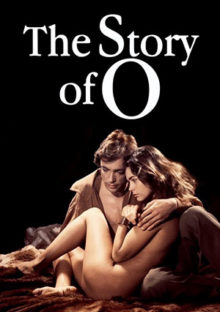 Some years ago, in Paris, a short erotic novel titled The Story of O by the pseudonymous author Pauline Reage appeared (Olympia Press, 1957,1960; some unverified records show this book to have appeared first in 1954). Now, after a career in the underground market which has ranged all the way from severe censorship to a distinguished literary prize, the novel is freely available from Grove Press (1966, a hardcover edition) and from Brandon (a 1966 paperback edition entirely separate from the Grove edition). The heroine, if O can be considered such, is a woman who learns “discipline” from a society of improbable fiends and, along with this, learns just how subjective women can be. To a great many people this is a pornographic work, but it violates the rules for pornography and really does not qualify, though there is much specific sex. The acts portrayed cannot be classified as either pornographic or sadistic or masochistic, despite the emphasis on whippings, etc. Much of the book is concerned with the philosophical reactions of O and if the book is masochistic it is a mental masochism; a resigning tone pervades it. The lesbian sections are unlikely to interest homosexual women even subtly, but it is a very interesting book and very unlike the run-of-the-mill tripe which Olympia Press published to support its more serious work of publishing then-unheralded literary milestones such as The Ginger Man and Lolita.
Some years ago, in Paris, a short erotic novel titled The Story of O by the pseudonymous author Pauline Reage appeared (Olympia Press, 1957,1960; some unverified records show this book to have appeared first in 1954). Now, after a career in the underground market which has ranged all the way from severe censorship to a distinguished literary prize, the novel is freely available from Grove Press (1966, a hardcover edition) and from Brandon (a 1966 paperback edition entirely separate from the Grove edition). The heroine, if O can be considered such, is a woman who learns “discipline” from a society of improbable fiends and, along with this, learns just how subjective women can be. To a great many people this is a pornographic work, but it violates the rules for pornography and really does not qualify, though there is much specific sex. The acts portrayed cannot be classified as either pornographic or sadistic or masochistic, despite the emphasis on whippings, etc. Much of the book is concerned with the philosophical reactions of O and if the book is masochistic it is a mental masochism; a resigning tone pervades it. The lesbian sections are unlikely to interest homosexual women even subtly, but it is a very interesting book and very unlike the run-of-the-mill tripe which Olympia Press published to support its more serious work of publishing then-unheralded literary milestones such as The Ginger Man and Lolita.
Remember Richard Halliburton? Well, Dearie, if you do, you’re much older than I. Dickie Darling Halliburton was the intrepid explorer-lecturer of the tea-room circuit of women’s clubs in the 1930’s. A handsome, blondish fellow, he was described by his father as having the manners and appearance of a lounge-lizard. Jonathan Root has admirably recorded his life in Halliburton: The Magnificent Myth (Coward-McCann, 1965). Richard is not called homosexual by Mr. Root, but readers will be unable to miss the innuendoes which serve in place of outright statement. Some of the episodes recorded are hilarious, including a pilot who agreed to work for Richard only after specifying that they separate on landing and stay in separate hotels because the pilot felt and said: “I don’t think your interests are mine.” On a much more serious note, the life of the young writer Paul Mooney, Richard’s companion for many years (they died together, in fact) is also recorded with some insight and compassion.
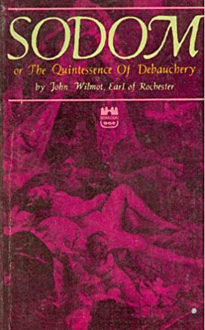 This seems to be the year of bringing out the old hot chestnuts, for legitimate public consumption. Sodom: Or The Quintessence of Debauchery, by John Wilmot, Earl of Rochester, dates back to 1684. This short bawdy drama has appeared in Paris several times in this century, with the latest edition coming from Olympia Press in 1957. Now Brandon House has issued it (1966) in a 95¢ paperback edition. It’s well worth the price, if only as a curiosity, and the play actually has some hilariously comical couplets on all aspects of sexuality—with the emphasis, of course, on male homosexuality.
This seems to be the year of bringing out the old hot chestnuts, for legitimate public consumption. Sodom: Or The Quintessence of Debauchery, by John Wilmot, Earl of Rochester, dates back to 1684. This short bawdy drama has appeared in Paris several times in this century, with the latest edition coming from Olympia Press in 1957. Now Brandon House has issued it (1966) in a 95¢ paperback edition. It’s well worth the price, if only as a curiosity, and the play actually has some hilariously comical couplets on all aspects of sexuality—with the emphasis, of course, on male homosexuality.
Gabriel Purefoy, representative British novelist, is buried at Westminister [sic] Abbey with all the proper pomp and circumstance, attended by the Prime Minister and many lesser notables. His dear circle of intimates, including his widow, Amy, gather following the funeral to discuss the practical future of Amy and the literary future of the “Great Man’s” works. The discovery of an unpublished novel which recounts Gabriel’s homosexual involvements creates a veritable nest of complications in J. I. M. Stewart’s delightful novel An Acre of Grass (Norton, 1965). Mr. Stewart is, of course, very well known as Michael Innes, writer of British detective novels. But it is his knowledge and talent as Reader in English literature at Christ Church, Oxford, which he brings to bear on this complicated, witty, wry imbroglio on the lives and loves of a circle not unlike many famous literary salons of the recent past. Very special and very pertinent.
—GENE DAMON
©1966, 2018 by The Tangent Group. All rights reserved.

